If you’re looking for a unique, sustainable travel experience with an emphasis on nature and outdoor exploration, then Cuba is your destination. With its rolling hills, lush forests, diverse array of wildlife and dramatic coastline, it’s no wonder why so many outdoor enthusiasts choose to hike in this Caribbean paradise. Whether you’re a seasoned hiker or just getting started, there are plenty of trails that offer breathtaking views and ample opportunities for exploration. Here are six of the must-see spots for hiking in Cuba!
When is the best time to go hiking in Cuba
Cuba has a tropical climate, which means two seasons. Both have their pros and cons if you ask me, the temperatures will always be somewhere between 23 and 30. It can feel a little cool to being nice and warm. Given I love warm, I think either end of the scale is perfect. What changes is the humidity levels and the chance of rain.
Between November and April is the ‘dry’ season. As the name suggests, less chance of rain and the air is dry, as the humidity level drops. In this season, it’s quite comfortable to got for a hike in Cuba, but the stunning waterholes you find may just feel like ice water.
From May to October, the humidity level rises, on occasions, like the rainy days in can be up around 90%. Which, personally I think is awesome for the skin, however if you aren’t used to this kind of weather, it can feel very uncomfortable. The added benefit of hiking in this weather, is that you’ll definitely be ready to hop under the waterfall for a quick tip to cool down and the extra water makes these places look even more stunning!
No matter what time of the year you venture out, take your rain coat or a poncho, wear sunscreen and ensure that you put mosquito repellent on and have it handy for your hike back.
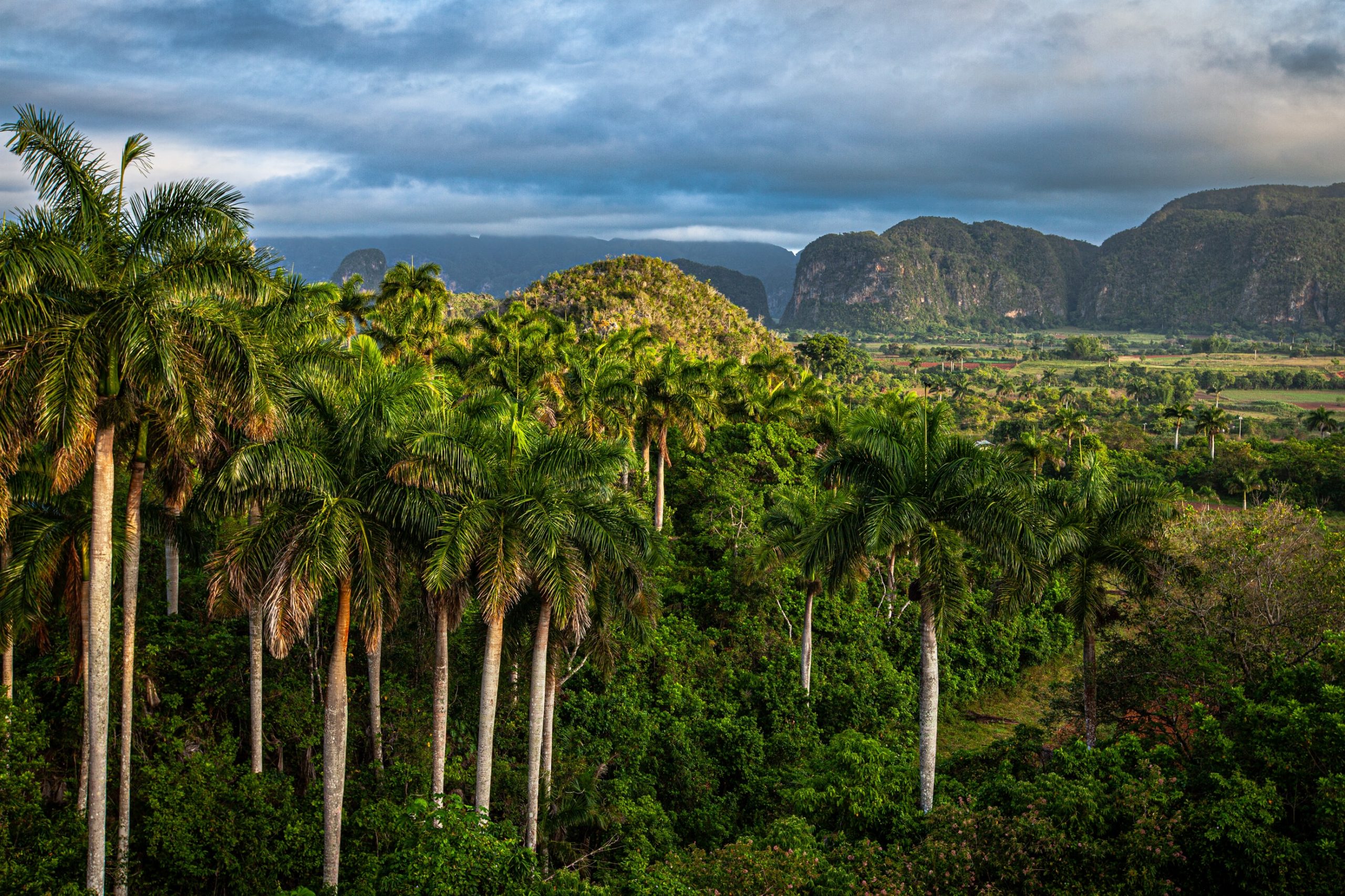
Hikes in Cuba
There are some stunning spots from west to east in Cuba to discover, hopefully they’ll stay that way for many years to come given that over 10% of Cuba is protected and they have six UNESCO biosphere reserves, namely they are: Guanahacabibes Peninsula Biosphere Reserves (Pinar del Río province), Sierra del Rosario (Artemisa province) and Ciénaga de Zapata (Matanzas province) – this is also a RAMSAR site given its ecological importance, Guanahacabibes Peninsula Biosphere Reserves (Pinar del Río province), Sierra del Rosario (Artemisa province) and Ciénaga de Zapata (Matanzas province). So where to begin your discovery of these stunning places?
Viñales Valley National Park
Located in western Cuba, Viñales Valley National Park is one of the most beautiful places to explore on foot. It is home to some of Cuba’s most breathtaking views. With its spectacular limestone outcroppings and tropical valleys, it’s easy to understand why this region is often referred to as “Cuba’s Garden of Eden”.
The park is home to some of the country’s most picturesque limestone formations and its mountain paths offer breathtaking views of the surrounding countryside. Hike through the valley and take in the lush flora and fauna, meet the farmers, learn about the perfect cigar from crop to smoke, admire and even taste the delicious produce or climb up one of the towering limestone hills for a panoramic view of the valley below.
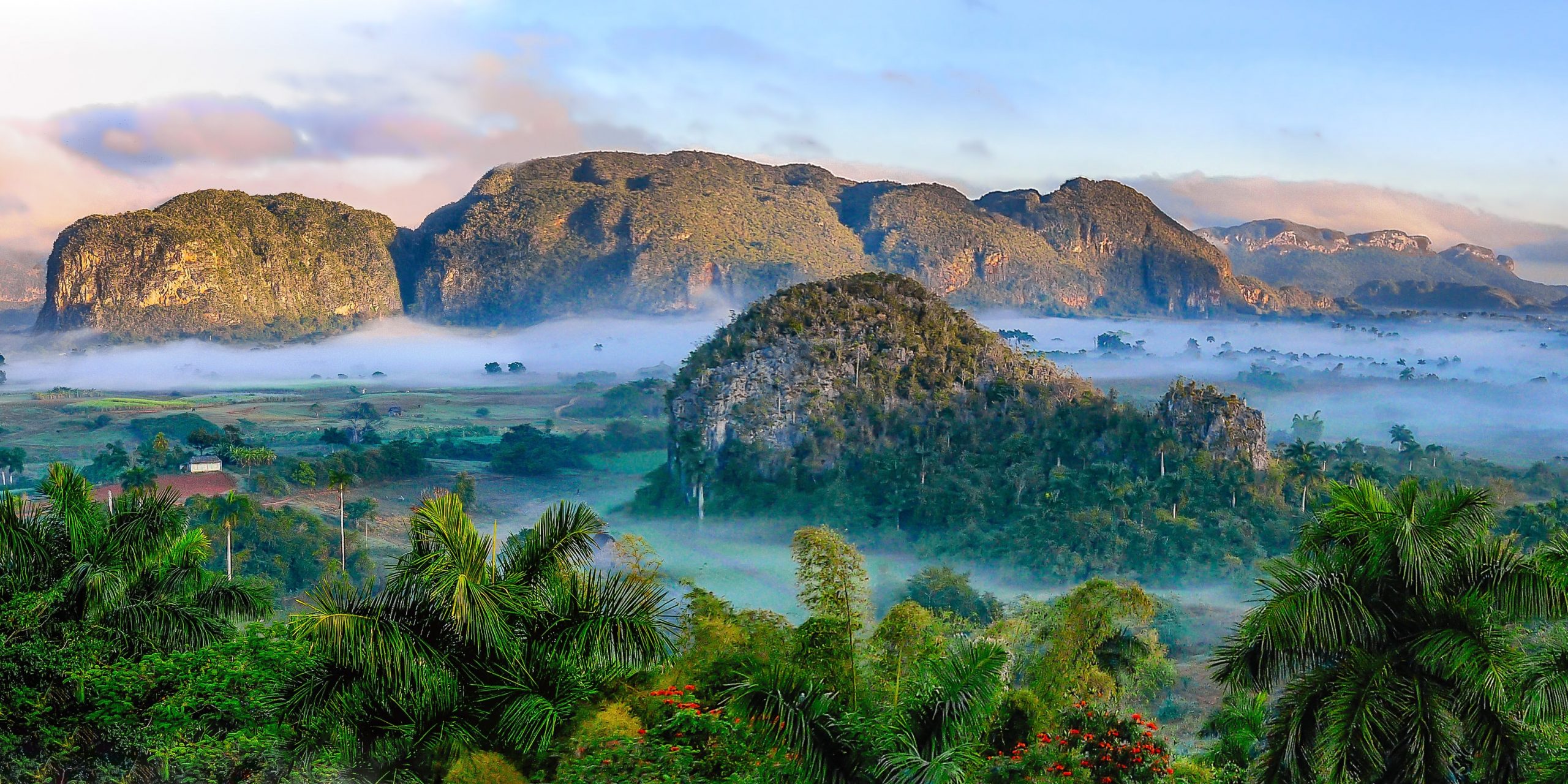
Turquino National Park
This national park lies at the heart of Sierra Maestra mountain range and is home to Pico Turquino —the highest peak in Cuba at 1975m tall —as well as a variety of other peaks that offer some truly spectacular views. And if the views weren’t enough! There are plenty of waterfalls, rivers and caves to be explored via a number of different hiking trails.
La Guira National Park
Perfect spot to admire Cuba’s birdlife in this 54,000 acre moiuntain wilderness. The reserve features more than 20 miles of hiking trails that wind through lush forests and open fields full of wildflowers and wildlife. Keep an eye out for parrots, hummingbirds, the Cuban Tody and even wild boar!
You can check out the the Cuevas de los Portales, that’s created as the river cuts through the mountain, forming three joined caves. The caves are big and open so you don’t need flashlights This was the home of Che Guevara during the 1962 Cuban Missile Crisis.
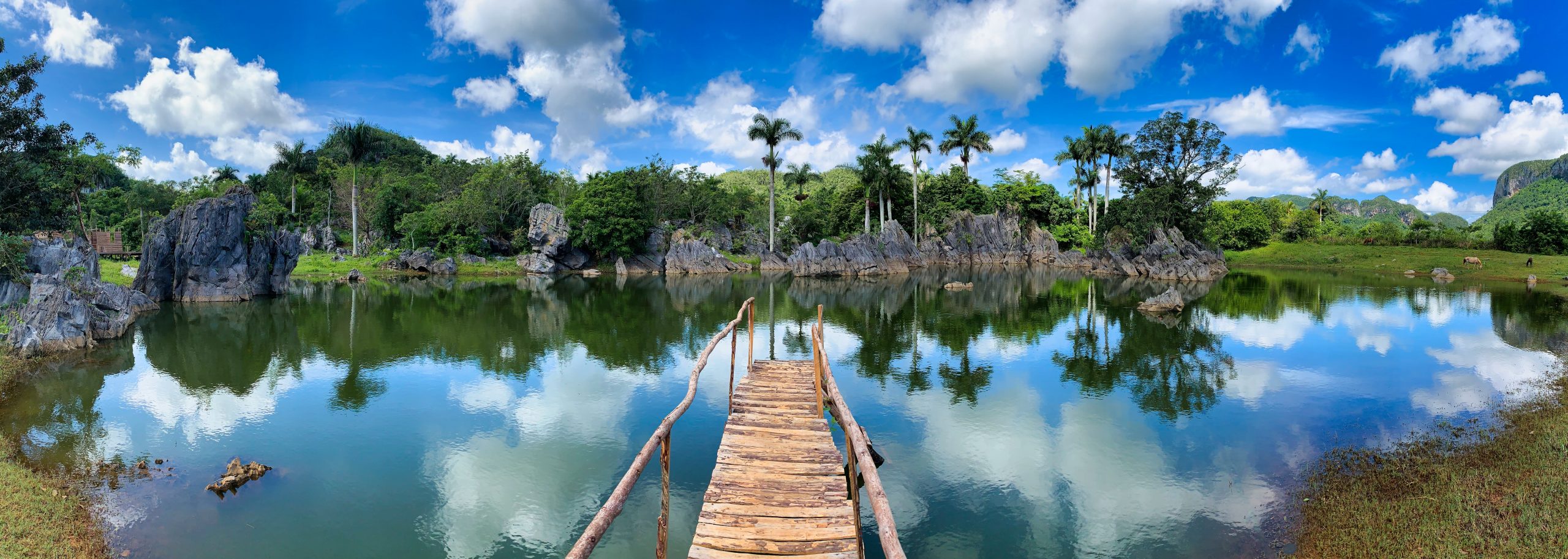
Cienaga de Zapata National Park
This protected area is located in southeastern Cuba near Bay of Pigs, that has a historical importance due to the botched CIA invasion in 1961, and features some incredible biodiversity including wetlands teeming with alligators and protected Cuban crocodiles as well as tropical forests filled with monkeys, coyotes, bobcats, deer and many other species. The park also contains several archaeological sites that date back thousands of years!
The treks here are also perfect for birdwatching. You’ll see anything from the world’s smallest bird, the bee hummingbird, to stunning water fowls like the Ibis and the American flamingo to name a few.
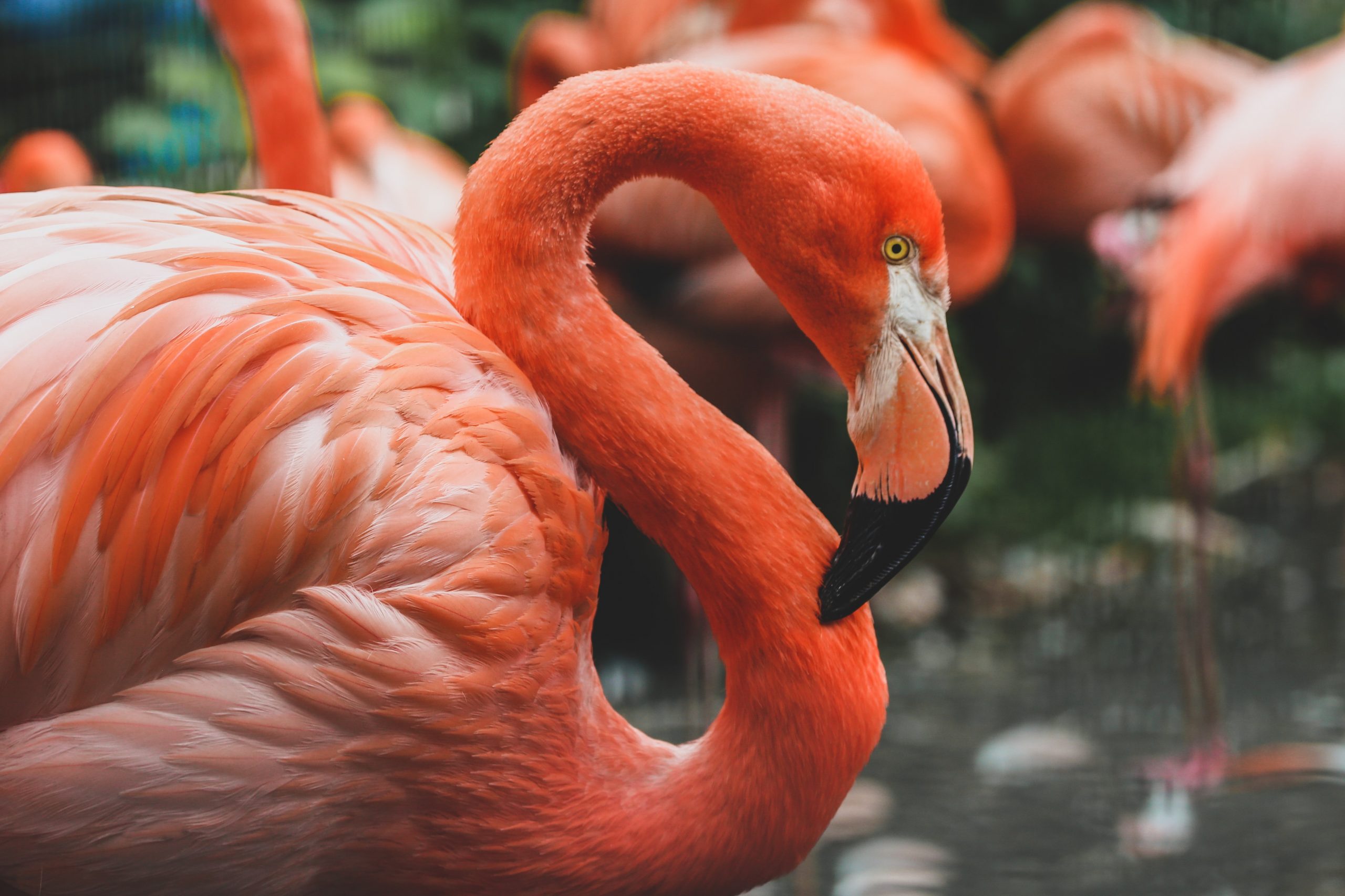
Topes de Collantes Nature Reserve
Located just outside Trinidad city in central Cuba, Topes de Collantes Nature Reserve is home to stunning waterfalls like Salto del Caburni which cascades 120 meters down into an emerald green pool below! This is an easy hike with flats roads and an easy to follow creek all the way to the waterfall.
Or you can choose one that’s a little more challenging. A hike to Vegas Grande waterfall in Topes de Collantes National Park is absolutely astounding. You’ll start with an easy stroll in, go through the case, then climb down the stairs made by the rocks in the area. You’ll definitely need to wear proper shows for this one!
Once at the waterfall, you will want to stay there forever! The pristine water is perfect to cool down in after the walk and the waterfall is so refreshing! There is a rock behind the waterfall where you can jump from through the waterfall itself. Too bad you have to climb back up!
Topes the collantes has my heart, given it’s near Trinidad.. so as a trifecta, I’d say visit El Nicho. It is a short walk really, but is absolutely stunning. The trail goes along the vivid river with small falls and swimming holes along the way and stunning waterfalls at the end.
La Gran Piedra
Located outside Santiago de Cuba city is La Gran Piedra—a massive boulder perched atop a hillside offering panoramic views of Santiago Bay below! The trail up to La Gran Piedra winds through lush forests with plenty of opportunities to observe local wildlife—especially birds like parrots and hummingbirds flitting about from tree to tree!
But be prepared! This 14.5-km point-to-point trail is considered a challenging route, it takes an average of 5 h 7 min to complete. It’s unlikely you’ll encounter many other people while exploring.
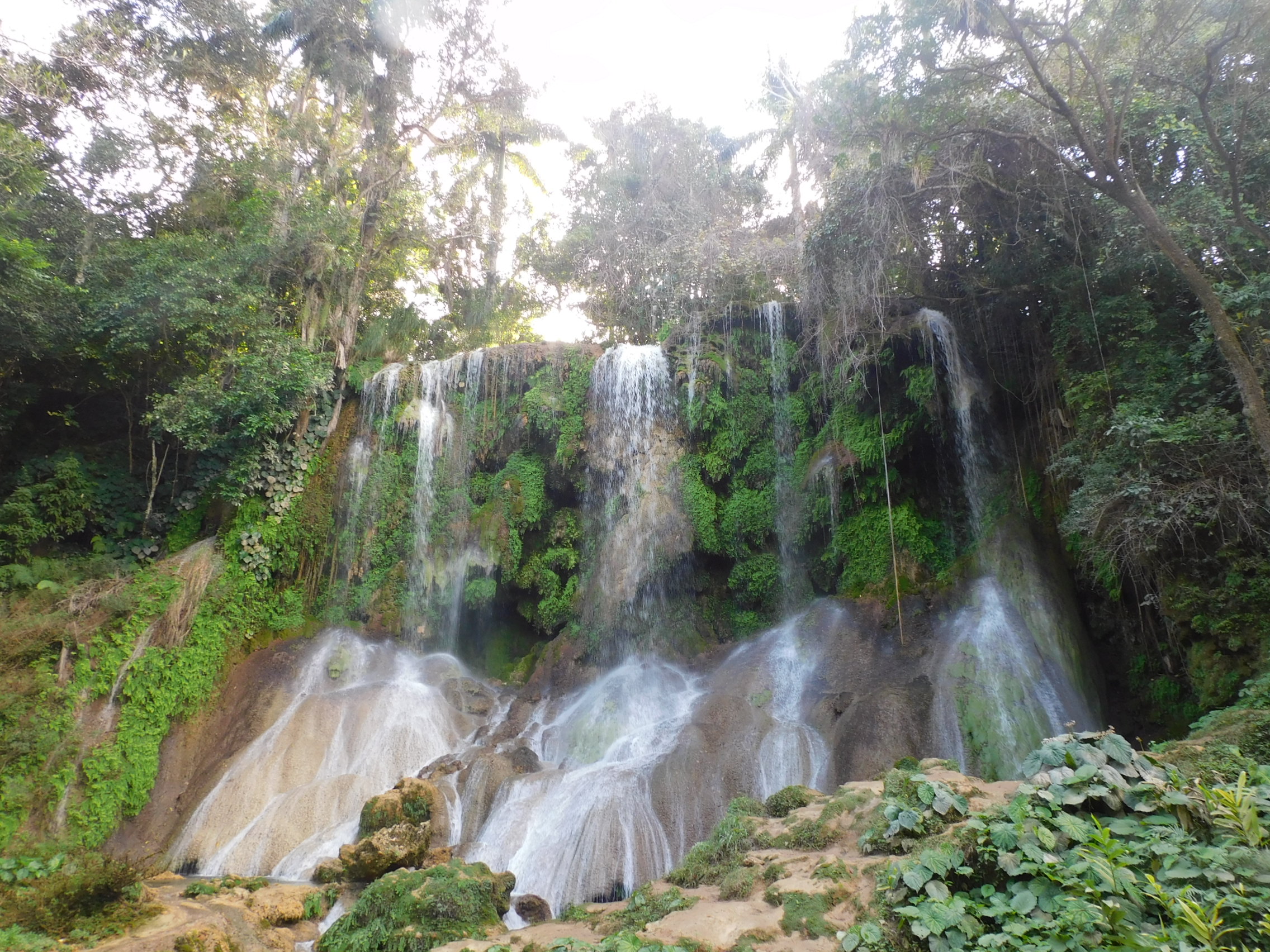
Alejandro de Humboldt National Park
Alejandro de Humboldt National Park is located on the eastern side of Cuba. This World Heritage Site covers over 2 million hectares in eastern Cuba and is considered one of the most biologically diverse parks in all Latin America offering some truly unique ecosystems such as mangrove swamps, coastal wetlands, rainforests, savannas and even deserts.
There are numerous trails through lush tropical forests where hikers can spot rare bird species as well as endangered rodents such as hutias! This is the place where Nils Navarro spent a couple of months earlier this year and documented 40 new species of birds to add to Cuba’s bird list.
Climbing El Yunque is a must-do Cuba hike if you are visiting Baracoa. The hike itself is considered moderate to difficult for its steep ascent. It begins with you wading through the Duaba River, then passes through a cocoa plantation. Your guide will point out flora and fauna along the way and you might be offered food or drinks by the few families who live within the park.
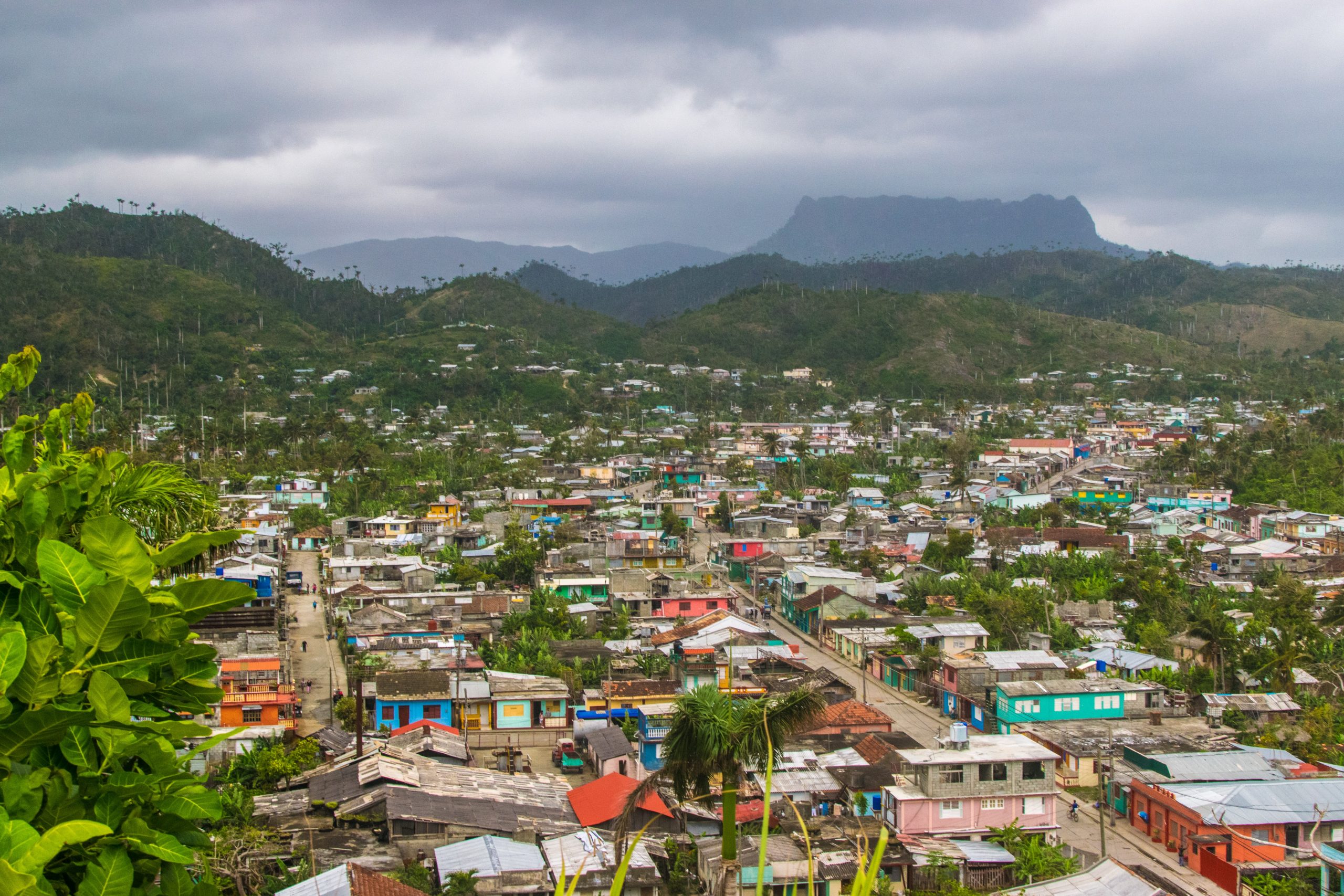
Be responsible when hiking in Cuba
Leave no trace and pick up after others!
Unfortunately you will see rubbish on treks around Cuba. It’s because education about waste and a waste management system is much needed around here. However I ask you to please don’t add to it, rather be the ambassador for cleaning up and help us make the place better than we have found it by picking up rubbish along the way if you see it.
Bring a reusable water bottle
When you travel with us we will refill your water bottle to ensure that you have clear drinking water everyday. If you travel alone I’d recommend that you either bring water purification tablets or a bottle with a filter as it is not recommended that you drink the water in Cuba.
Stay on the marked trail
It is so important to stay on the marked trail so that you don’t harm the natural area including wildlife. Don’t try to get a better angle off the path for your socials, instead explain why it is important to stay on the path.
Whether you’re an experienced hiker or just getting started, there are plenty of incredible trails to explore throughout Cuba’s natural landscape! So if you’re looking for an amazing hiking experience that combines stunning natural beauty – from dramatic waterfalls and lush forests to spectacular coastal vistas and mesmerizing mural formations – with cultural immersion, look no further than this Caribbean paradise! There’s something here for everyone who loves nature and outdoor adventure! So pack your bags and get ready for an unforgettable experience—Cuba awaits!


